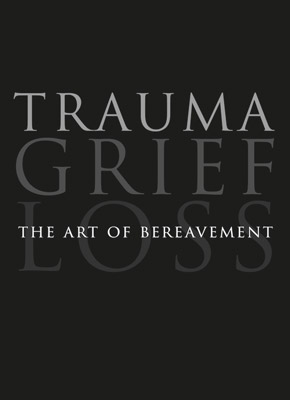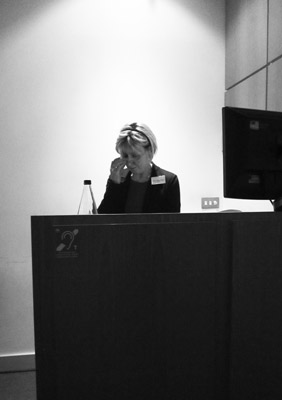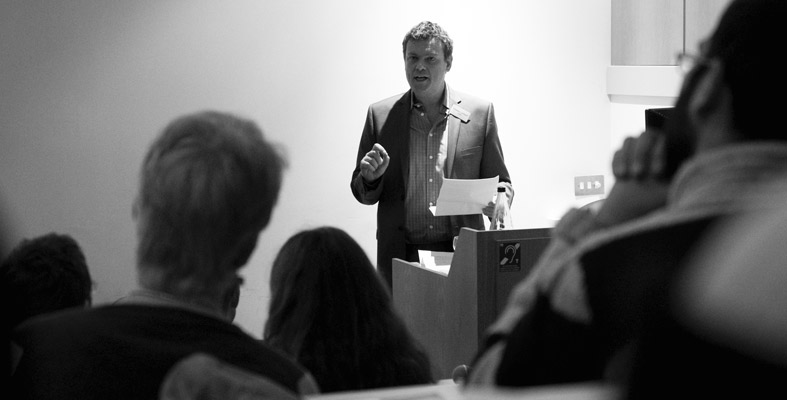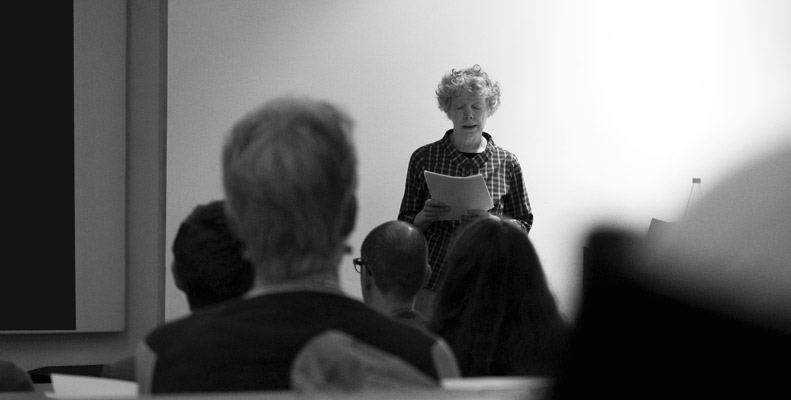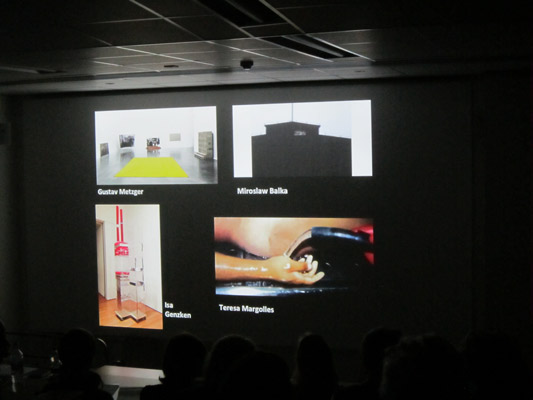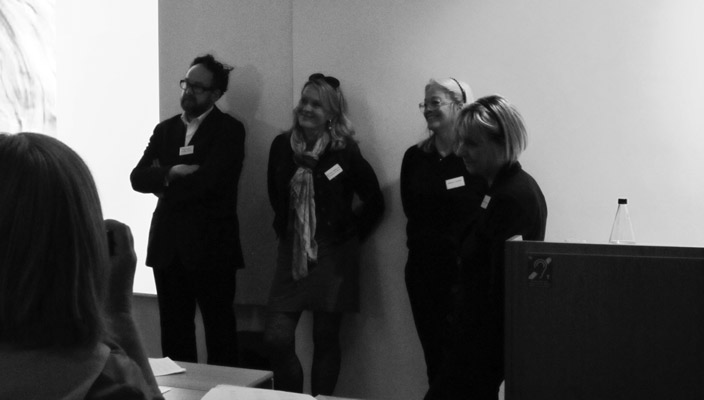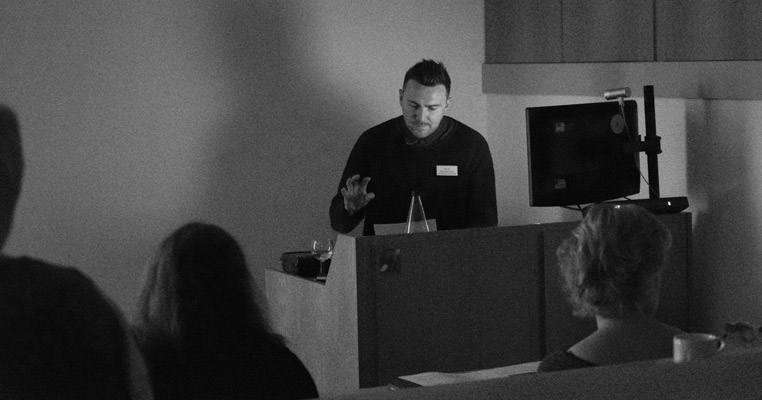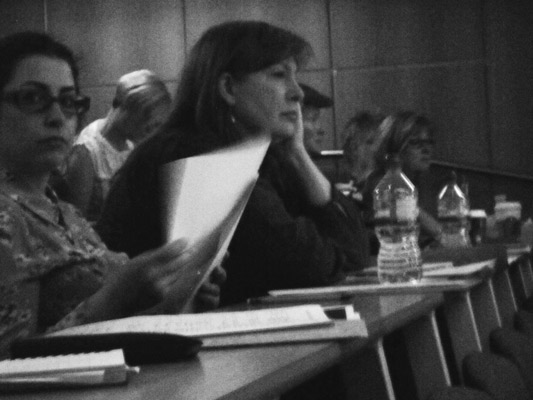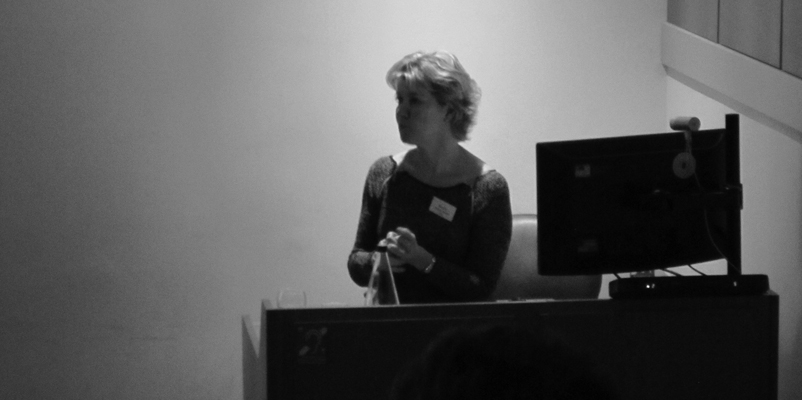The Art of Bereavement - Abstracts
Dr. Brian Dillon (Keynote)
“Time she stopped” — photographs, mourning, autobiography.
I’m interested in exploring the very different practices of reflection and writing that produced the two texts I’ll refer to: my 2005 memoir In the Dark Room and a new essay for Cabinet magazine, “For the simple reason is”. The first approaches photographs of my parents, who died when I was an adolescent, as mementoes or relics, very much influenced by the modes of thinking and writing I found in Roland Barthes’s Camera Lucida and the works of W. G. Sebald — the photographs were both portals to memory and objects of attachment and attention. The second deals with photographs taken by an aunt of mine in the course of a decades-long feud with her neighbours in Dublin: these are evidence of her mental state as well as memorial objects. They demand a new and in some ways more fraught kind of writing, despite the fact that my relationship with her was of course very different from those in In the Dark Room. I will try to draw some lessons not just about how one writes about grief and photography, but about modes of thought and style that may be translatable to other art forms.
Charles Lambert
The changing art of the obituary writer
Obituaries were introduced into national newspapers by John Thaddeus Delane, who edited the Times from 1841 to 1877. Conventions soon began to evolve. The subject's greatest achievements would be listed in the first few paragraphs, followed by a summary of his or her date and place of birth and parental occupations. The piece would end with a list of the deceased's "survivors". Most importantly, the obituary would be unemotional; in keeping with the strictest interpretation of the journalistic code of objectivity, the writer would appear to be unmoved.
This objective straight jacket made obituary writing something of an art form. A great obituarist, generally anonymous, could gently direct readers' feelings through careful selection of facts. An obituary's power lay in its lack of overt emotion.
This style changed very little in more than a century. But , in recent years, The Independent and Guardian have experimented with new ways of telling life stories, often employing well-known writers or close friends of the deceased to produce much more personal accounts than had been the case in the past. Even traditional outlets such as the BBC and the Daily Telegraph have relaxed their strict conventions. The deaths of Stephen Gateley and Amy Winehouse produced online obituaries that expressed grief openly and unashamedly.
This paper seeks to explain the changing nature of the obituary with reference to changes in British culture and technology. It draws research within Journalism Studies that suggests that the death of Diana Princess of Wales in 1997 encouraged writers to experiment with more personal and emotional forms of writing.
Dr Myna Trustram
Finding a form to enact grief or How I picked flowers for a year
She do the bereaved in different voices
For the point of this address is to prod
And shepherd you back within range
Of my strained ears; …
– Still no? Then let me rest, my dear.
From A Part Song by Denise Riley (London Review of Books, 9 February 2012, p.14)
I search for the point of this address. Perhaps it is to find the rest that Denise Riley asks for in her poem about the death of her son.
It is about a device I created as I moved across the ‘trampled meadow’ (Paterson 2006) of my loss. I call it, ‘Each Day at a Time’ for that is what the bereaved are told to do, take each day at a time. For a year I picked a different flower each day and described it in a diary. I now have a diary, photographs, a sound-piece, a performance and a collection of flowers.
It is about something that brought me closer to the rhythms of each day, something in-between an art that takes one closer to the suffering, and an art that seeks solace.
To help me analyse these actions the essay calls upon the different voices of psychoanalysts, Freud (1917), Winnicott (1971) and Bollas (1987), and poets Ashbery (1987), Heaney (1995) Paterson (2006) and Berger (2011). These wretched people have all beat me to it. How can I make my own address when others have already told the story of family grief?
And if I strip it down too niftily, this grief, what then will I have lost?
Dr David Slater (Keynote)
Incurring Debt; Picturing Death: Japanese Family Albums Washed Away in Tsunami Waters.
The triple crisis of Tohoku Japan was probably the most minutely documented disaster in history. But some images were also lost, including the hundreds of thousands of family photo albums that were washed away by the tsunami. Almost immediately, photo collection and restoration projects emerged all over Japan. Professor David H. Slater (Cultural Anthropology and Japanese Studies, Sophia University) will addresses the various issues that have been raised therein, including the anxiety, ambivalence and obligation that surround the uncontrolled circulation and handling of other people’s photos; the pictures’ role in the formulation of loss, creation of hope and discharge of duty; and more speculatively, the interpretive challenges these pictures pose to representing a rural imaginary now very much gone.
Paul Grace
Spectral Material
A photograph is always both an image and a thing. It fuses the fleeting, fugitive and evanescent, with a material base that is subject to creation and destruction. The paper Spectral Material examines this photographic duality in recent artistic practices which deal with trauma, collective memory and mourning.
It is a common trope in photographic discourse, to describe the photograph as an index of absence loss, and death. This paper focuses on photographic strategies that foreground and augment the material presence of the photograph in this index.
The paper investigates the relationship between the traumatic properties of image content, and the way distressed, torn, broken, and fractured surfaces of the photographic support, echo and amplify this content.
The paper also considers the cathectic, augmentative and disruptive roles of the ‘fabric’ of the photographic support or accompaniment, in the process of mourning, where the use of this support is magnified in contemporary photographic works. The potential of the material base of the photograph as an apparent repository of memory and traces will be explored.
Artists whose work relies on the interplay of material object and photographic image will provide reference points, and these will include, Isa Genzken, Gustav Metzger, Miroslaw Balka and Teresa Margolles. e paper draws upon a psychoanalytics of photography, mourning and trauma as they are applied and developed by Judith Butler, Ulrich Baer and Julia Kristeva.
Kathryn Beattie
Unveiling the Corpse in the 21st Century
Twenty-first-century American culture finds itself in the midst of a paradigm shift regarding social attitudes toward death, and art presents us with an invaluable window onto this timeless theme. The works of contemporary artists explored in this paper provide a measure of insight into this fragile relationship between visual culture and mortality.
Mass media consumption in the 20th century decoupled representation from reality – perhaps even the corpse from the body – and culminated in what Hans Belting has observed in the 21st century: “Though our image consumption today has increased to an unprecedented degree, our experience with images of the dead has lost its former importance altogether.”[i] Working outside this image overload pathology are a number of contemporary artists exploring their own relationships between the corpse, mourning, loss and denial, on the one hand, and art practice, aesthetics and public presentation on the other. The photographs of corpses by Sally Mann, for example, offer a personal approach and insight into ‘our changing journey to the end’. The viewers ‘exhume’ their own meanings from images discussed in the paper, recognizing an emerging twenty-first-century attitude toward death and acknowledging Julia Kristeva’s words, “But what use is art if it can’t help us look death in the face.”[ii]
[i] Hans Belting “Image, Medium, Body: A New Approach to Iconology,” Critical Inquiry 31.2 (2005): 307.
[ii] Julia Kristeva, Possessions, Trans. Barbara Bray (New York: Columbia University Press, 1998): 9.
Paivi Miettunen
Leonardo Bistolfi’s funerary monuments: love poems in marble on death.
Background: Expression of grief following death has engaged artists through centuries. Leonardo Bistolfi (1859-1933) was one of the finest sculptors in Italy and developed new symbolist funeral iconography. His exquisite marble monuments have been referred to as “Love Poems on Death”.
Objective: To explore how the theme of love was expressed in Bistolfi’s funerary monuments.
Methods: Selected monuments were included from the following Italian cemeteries: Staglieno (Genova), Cimitero Urbano (Borgo San Dalmazzo) and Cimitero Monumentale (Turin.) Bistolfi’s funeral monuments are referred to by their explanatory titles that they received when displayed as independent works of art during the artist’s life.
Results: Four themes of love emerge: 1) motherly love, 2) passionate love, 3) transformation of death into beauty and 4) comforting role of love through memories. Mother’s love is expressed in “The “Mater Dolorosa” (1888) and “Resurrection” (1906)”. “Mater Dolorosa” consists of a sole figure by a cross, with thematic similarity to grieving Virgin Mary. In the “Resurrection” a mother is kissing her son at death. This gentle kiss can be interpreted either as an awakening one, or as bringing “sweet death”. The “Brides of Death” (1894) expresses the continuity of spirit at its most passionate: in love, a theme that is also depicted in “The Lovers” (1884)” which shows a young couple, gazing deeply into each other’s eyes. “The Beauty of Death” (1895) celebrates the “Ideal of Beauty”, even in death. Finally, “Grief Comforted by Memories” depicts the personification of Grief reliving the memories and the passions of life.
Conclusions: Bistolfi’s exquisite aesthetic and social understanding was reflected in his monuments. Love was one of the major themes in his funerary monuments and ranged from mother’s love to passion felt by lovers, to view of Death as the welcoming groom, and finally, to gentle love evoked by memories.
Scott Ramsay Kyle
For all those born into the wrong family, I could weep for my broken Mother but no tears can come
In 2011 I started messaging on a linen cloth, the erratic scribble of words inspired me to take my own expressive thoughts to the blanket with stitch, I found this a way to exhaust emotive energy through my hand, needle and fabric base
In this paper, I aim to draw on subtleties from Merleau Ponty’s initial ideas of perception as well as considering visual gesture and movement. Describing Louise Bourgeois’ Maman sculpture and parental experience to Nietzsche’s Zarathustra in speaking to the tarantula of revenge and justice (1961: 123).
In response to the art of bereavement, I reminisce as a child my own perception of my Mother as similar to the alluring villainess Selena in Super Girl (1984). Actress Faye Dunaway resembled my Mother, the same colouring, Slavic high cheekbones and almond eyes, beautifully stylish and theatrically animated. In-actual fact this was a caricature. As an adult today there is now no relationship remaining with her. She came from a dysfunctional family with a tough background, my younger memories of her often laboriously referring backwards, her blurred subjective identity; she had little self-esteem and loss of control with traits of neurosis, depression, delusion and I can now identify that with the franticness of Woody Allen’s depiction of Blue Jasmine (2013).
Practice approach - 75-second film LINEN MESSAGE included inspired by,
“Oh Mother, I can feel the soil falling over my head” (I Know it’s Over, The Smiths: 1986)
Lise Bjørne Linnert in collaboration with Harald Gunnar Paalgard
"A Heap of Apricots"
What is your story?
It´s all in the telling. Stories are compasses and architecture, we navigate by them, we build our sanctuaries and our prisons out of them and to be without a story is to be lost in the vastness of a world that spreads in all directions like arctic tundra or sea ice. To love someone is to put yourself in their place, we say, which is to put yourself in their story, or figure out how to tell yourself their story.
Rebekka Solnit, ”The Faraway Nearby”, p 3
A pile of apricots is lying on Rebecca Solnits bedroom floor. They are coming from her mother´s tree, from the home she no longer lived in. Instead of looking rich and abundant, they looked like anxiety, maybe because every day a new was rotten… The reason for the pile of apricots was complicated…
Grief has no distance. Grief comes in waves, convulsions, sudden anxieties, that weaken the knees and blind the eyes and eradicate the dailiness of life…As days pass – as January becomes February and February becomes summer, certain things will happen. The image will become less immediate, less raw. The senses of the other more remote, even “mudgy”, softened, transmuted into whatever best serves life without…(from ”The Year of Magical Thinking”, Joan Didion)
“A Heap of Apricots” combines spoken words with video. The text performed refers to Rebecca Solnits books: “The Faraway Nearby” and “A Field Guide to Getting Lost”, Joan Didions “The year of Magical Thinking”, in addition to Bjørne Linnert´s own observations and thoughts. Cinematographer Harald Gunnar Paalgard confronts longing, mortality, loss and mourning through his camera.
Linnert and Paalgards two voices form “A Heap of Apricots”

